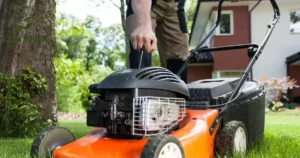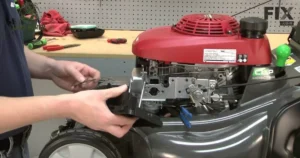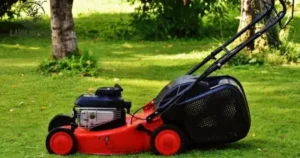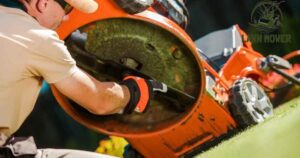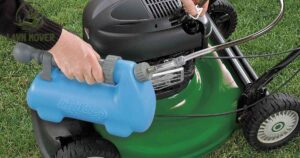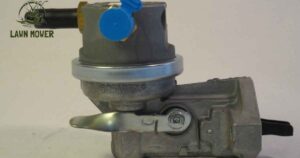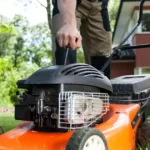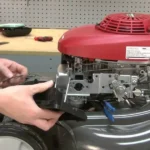To remove and sharpen a lawn mower blade, first, disconnect the spark plug to ensure safety. Use a wrench to loosen and remove the blade, then sharpen it with a file or grinder, maintaining the original angle. Once sharpened, reattach the blade securely, and reconnect the spark plug before resuming mower operation.
Revitalize your lawn mower’s cutting prowess with a simple DIY task – removing and sharpening the blade. Unveil the secrets to maintaining a pristine lawn by learning the art of blade maintenance. With just a few steps, you can ensure a sharper cut and a healthier lawn in no time.
To remove and sharpen a lawn mower blade, start by disconnecting the spark plug to ensure safety. Use a wrench to loosen and remove the blade, then secure it in a vise for sharpening with a file or grinder. Maintain a consistent angle and balance while sharpening, ensuring a clean and sharp cutting edge for optimal lawn mowing performance.
Not The Sharpest Tool In The Shed
When it comes to the phrase “not the sharpest tool in the shed” for a lawn mower, it usually implies that the cutting blade is dull or in need of sharpening. A dull blade can result in uneven and ragged cuts, making the mower less effective in maintaining a well-groomed lawn.
Regularly inspecting and sharpening the mower blade is essential for optimal performance. A sharp blade ensures a clean and precise cut, promoting a healthier lawn by minimizing stress on the grass and preventing the risk of disease. Keeping the blade sharp is a simple yet crucial maintenance task for anyone looking to achieve a neatly manicured lawn with their trusty mower.
Danger Will Robinson! – Pull The Plug On That Spark Plug, Power Cord, Or Battery!
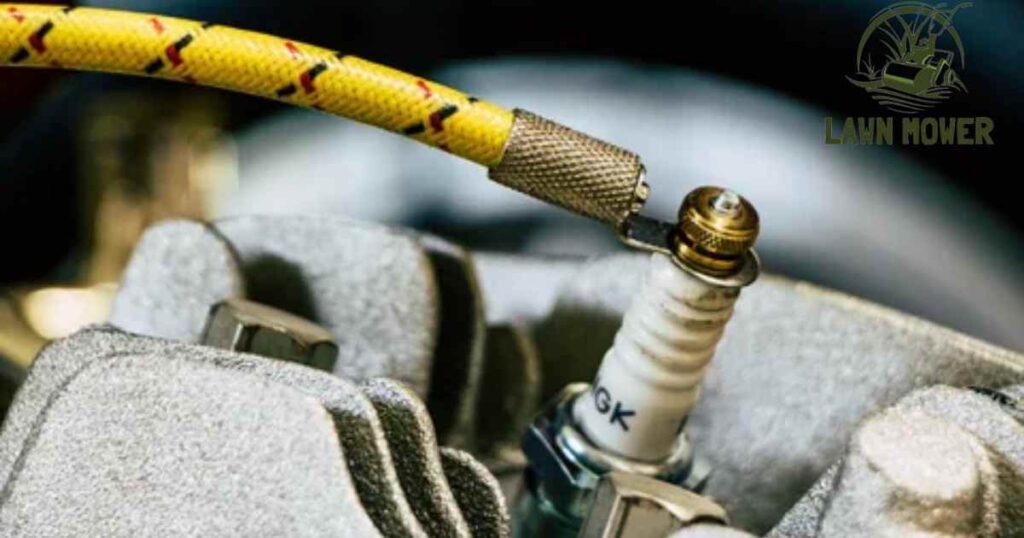
Before performing any maintenance on your lawn mower, it’s crucial to prioritize safety. Begin by disconnecting the spark plug, power cord, or removing the battery to eliminate the risk of accidental starts. This simple precautionary step ensures a secure working environment and prevents potential injuries during blade removal or maintenance tasks.
Whether you’re sharpening the blade or conducting routine checks, always heed the warning: “Danger Will Robinson!” Pulling the plug on the spark plug, power cord, or battery is a quick and easy way to safeguard yourself from unexpected starts, creating a safer workspace for maintaining your lawn mower.
Tip The Mower On Its Side – The Correct Side
When tipping your lawn mower on its side for maintenance, always choose the air filter and carburetor side. This is usually identified in the mower’s manual and helps prevent oil and fuel from leaking into these critical components, ensuring proper engine function.
Tilting the mower on the correct side facilitates easier access to the blade for sharpening or replacement. Remember to take necessary safety precautions, such as disconnecting the spark plug and draining the fuel tank, before tilting the mower to avoid any potential hazards.
Removing The Blade – Lefty Loosey Righty Tighty
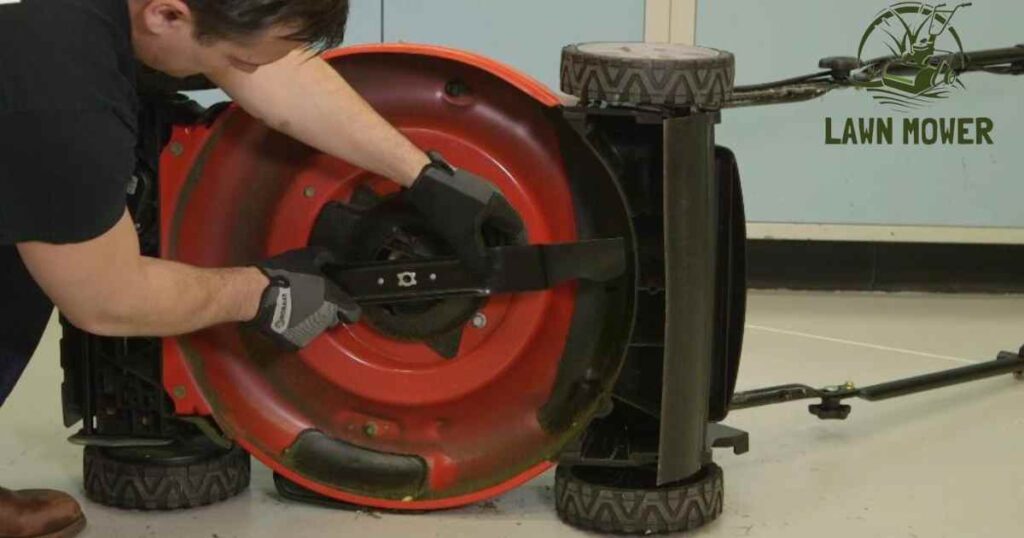
To remove the blade from a lawn mower, remember the mantra “Lefty Loosey, Righty Tighty.” Locate the bolt securing the blade, usually near the center beneath the mower deck. Turn the bolt counterclockwise (left) using a wrench to loosen and eventually remove the blade.
Once the bolt is loose, carefully lift the blade from its housing. Be mindful of any spacers or washers, as these should also be removed and kept in order for reassembly. This simple lefty-loosey, righty-tighty method ensures a straightforward process for removing and reinstalling the mower blade.
How To Sharpen A Lawn Mower Blade
To sharpen a lawn mower blade, begin by disconnecting the spark plug for safety. Secure the mower blade in a vise, using a file or grinder to sharpen the cutting edge. Maintain a consistent angle and balance while sharpening, removing any nicks or dull spots for improved cutting efficiency.
Remember to periodically check the blade balance by suspending it on a nail. A balanced blade ensures even cutting and prevents unnecessary wear on the mower engine. Regularly sharpening the blade contributes to a healthier lawn and extends the life of your lawn mower.
Sharpening With A File Or Angle Grinder
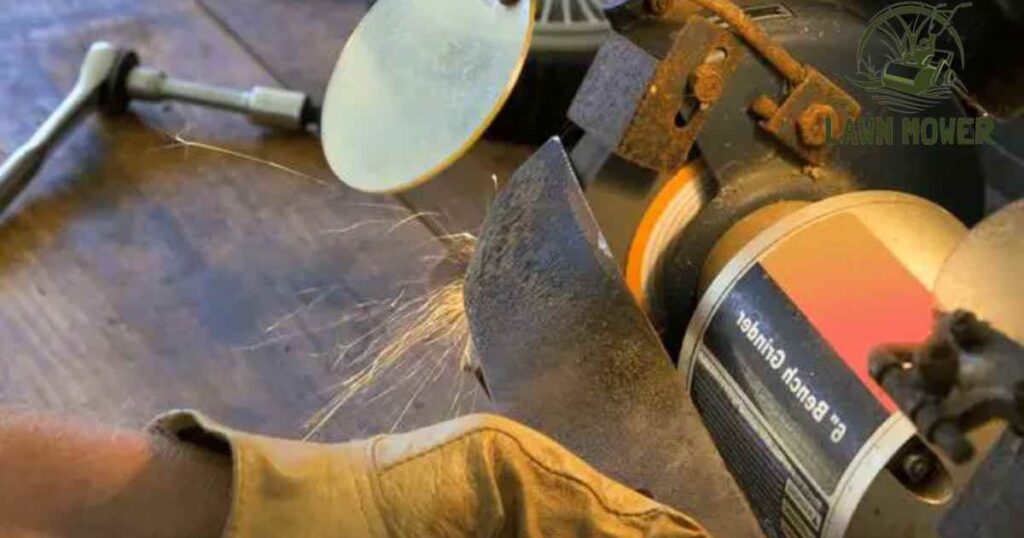
When sharpening a lawn mower blade with a file, secure the blade in a vise and maintain a consistent angle along the cutting edge. Use smooth and even strokes with the file to remove any nicks or dull spots, ensuring a sharp edge for efficient grass cutting.
Alternatively, if using an angle grinder, wear safety gear such as goggles and gloves. Hold the grinder at a steady angle, gently grinding the blade in a controlled manner. Be cautious not to overheat the blade, and periodically check for a sharp edge to guarantee a well-maintained lawn mower blade.
Keeping Your Lawn Mower Blade In Balance
| Aspect | Description |
| Regular Inspection | Periodically check the blade for any signs of damage, such as bends, nicks, or dents. |
| Balance Check | Before sharpening, make sure the blade is well-balanced. An imbalanced blade can cause vibrations and uneven cutting. |
| Blade Removal | Always disconnect the spark plug and wear protective gloves before removing the blade for sharpening. |
| Cleaning | Remove grass clippings, dirt, and debris from the blade to ensure a clean surface for sharpening. |
| Sharpness Check | Ensure the blade is uniformly sharp along its entire edge. Uneven sharpening can affect cutting performance. |
| Balancing Technique | If the blade is imbalanced, use a blade balancer or a simple nail and a level surface to achieve proper balance. |
| Sharpening Angle | Maintain the manufacturer-recommended sharpening angle. This ensures optimal cutting performance and blade longevity. |
| Balancing After Sharpening | Check the balance again after sharpening to ensure that the removal of material hasn’t affected the blade balance. |
| Tightening | When reinstalling the blade, ensure it’s securely tightened to prevent accidents and ensure safe operation. |
| Frequency | Sharpen the blade regularly, ideally at the start of each mowing season, or more often if you notice decreased performance. |
Reinstall The Blade
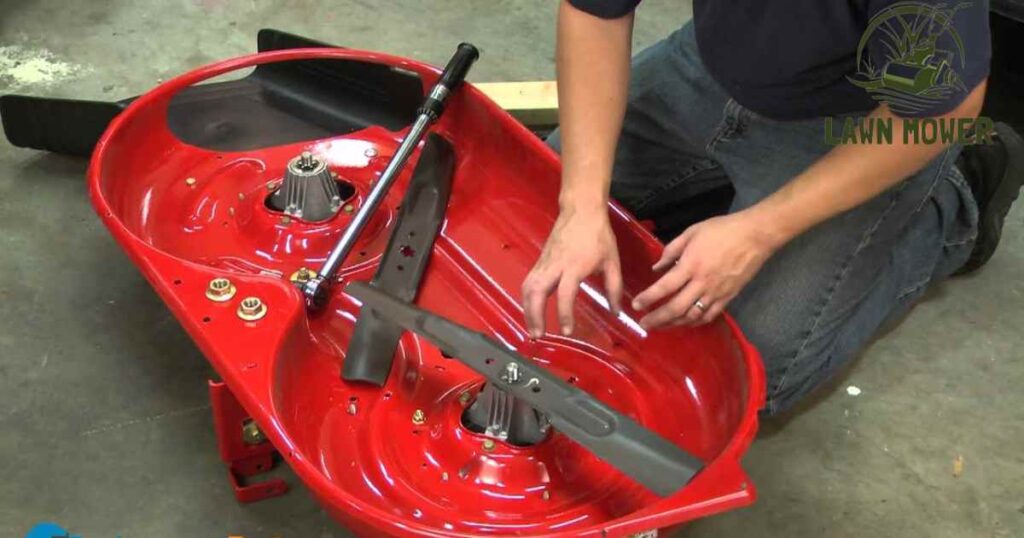
To reinstall the lawn mower blade, carefully place it back onto the spindle, making sure it aligns with any existing marks or indications. Use the wrench to tighten the blade nut securely, ensuring it’s snugly in place. Double-check the blade’s positioning to guarantee proper alignment before moving on to the next step.
Once the blade is securely reinstalled, reconnect the spark plug wire to restore power to the lawn mower. Start the engine and let it run briefly to ensure the blade is spinning smoothly and there are no unusual vibrations. Your lawn mower is now ready for efficient and effective grass cutting.
Things to check before changing blades
- Blade Sharpness:
- Ensure that the existing blades are sharp and not dull.
- Dull blades can tear grass instead of cutting it cleanly, leading to an uneven lawn.
- Blade Condition:
- Inspect the blades for any signs of damage, such as bends, cracks, or excessive wear.
- Damaged blades can affect cutting efficiency and may need replacement.
- Balancing:
- Check the balance of the blades to ensure even weight distribution.
- Imbalanced blades can cause vibration, leading to wear on the mower and reduced performance.
- Blade Compatibility:
- Verify that the replacement blades are compatible with your specific lawn mower model.
- Using the wrong blades may result in poor cutting and potential damage to the mower.
- Blade Size and Type:
- Confirm that the new blades have the correct size and type recommended for your lawn mower.
- Different mowers may require different blade specifications.
- Blade Installation:
- Review the mower’s manual for proper blade installation instructions.
- Ensure the blades are securely fastened to prevent accidents during operation.
- Mower Safety Switch:
- Check if there is a safety switch that prevents the mower from starting when blades are not properly installed.
- Make sure the safety features are functioning correctly.
- Blade Maintenance:
- Consider sharpening the blades if they are in good condition but have become dull over time.
- Regular maintenance can extend the lifespan of the blades and improve cutting efficiency.
- Lawn Conditions:
- Assess the current state of your lawn before changing blades.
- Different conditions may require adjustments, such as using mulching blades for thicker grass.
- Personal Safety Gear:
- Prioritize safety by wearing appropriate protective gear, such as gloves and safety glasses, when handling or changing blades.
- Ensure the mower is turned off and the spark plug is disconnected before attempting any maintenance.
- Blade Cleaning:
- Remove any grass clippings or debris that may have accumulated on the blades.
- Clean blades enhance cutting performance and reduce the risk of corrosion.
- Belt Inspection:
- If your mower has a belt drive system, inspect the belts for wear or damage.
- Replace any worn or damaged belts before changing the blades.
Frequently Asked Questions
What Happens If You Put Lawn Mower Blades on Upside-Down?
If lawn mower blades are installed upside-down, they won’t cut grass effectively, potentially causing uneven cuts and increased wear on the mower. It can also lead to poor mulching and overall diminished mowing performance.
Can you sharpen a lawn mower blade without removing it?
No, it’s not recommended. Removing the blade ensures safe and effective sharpening.
How do you sharpen a lawn mower blade with hand file?
Secure the mower blade in a vise and use a hand file to sharpen it, maintaining the original cutting angle.
What tool do you need to remove a lawn mower blade?
A socket wrench and the appropriate-sized socket.
Conclusion
Maintaining a sharp and well-balanced lawn mower blade is essential for achieving a clean and efficient cut. Regular removal and sharpening of the blade not only enhance the overall performance of the mower but also contribute to the health of your lawn by preventing tearing and uneven cutting.
By following the simple steps outlined in this guide, you can ensure that your lawn mower remains a reliable tool, promoting a lush and well-manicured lawn throughout the seasons.
The process of removing and sharpening a lawn mower blade is a straightforward task that any homeowner can undertake with minimal effort.
Investing a little time in this routine maintenance can significantly extend the lifespan of your mower, save you money on replacement blades, and ultimately result in a healthier and more aesthetically pleasing lawn. Regular blade care is a small but crucial aspect of lawn mower upkeep that pays off in the long run.

With a wealth of expertise spanning six years, I am a seasoned professional in the realm of lawn mowers. My mastery includes intricate knowledge of models, maintenance, and optimal performance.

